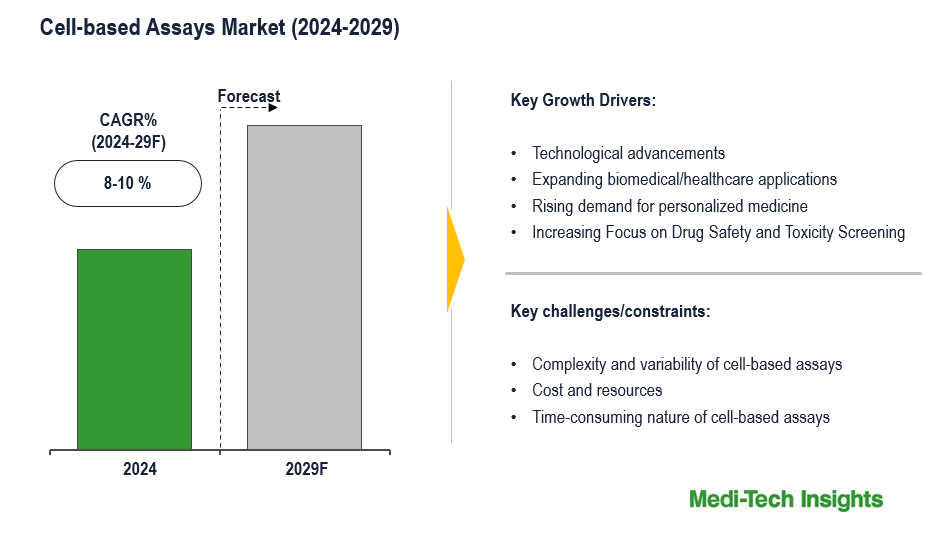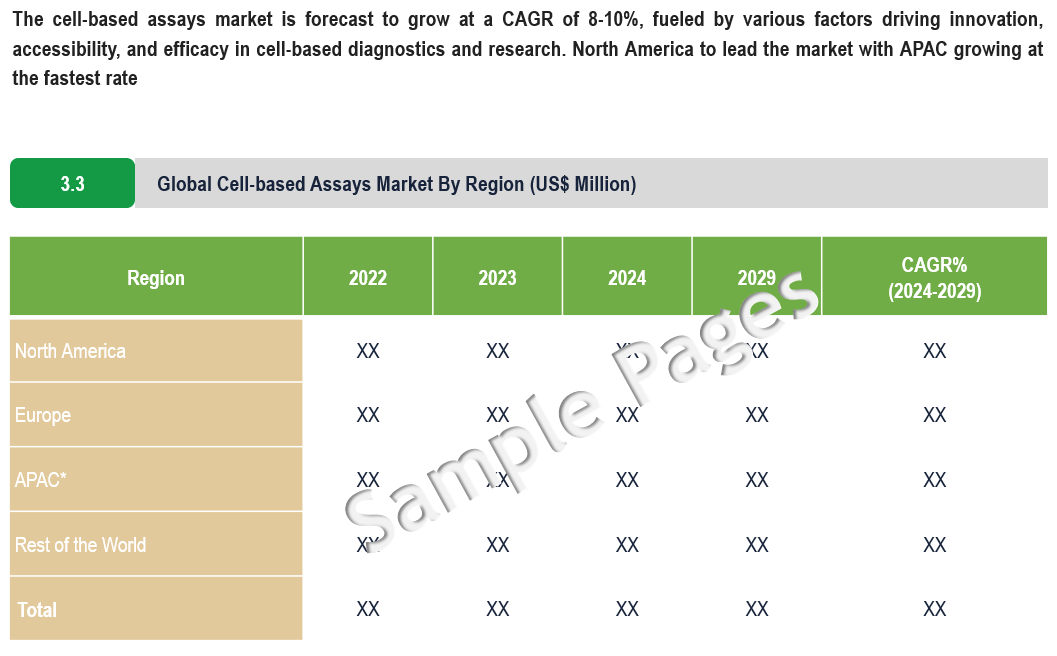
Cell-Based Assays Market Size, Trends, Opportunities, Industry Growth & Future, for Forecast 2024 to 2029
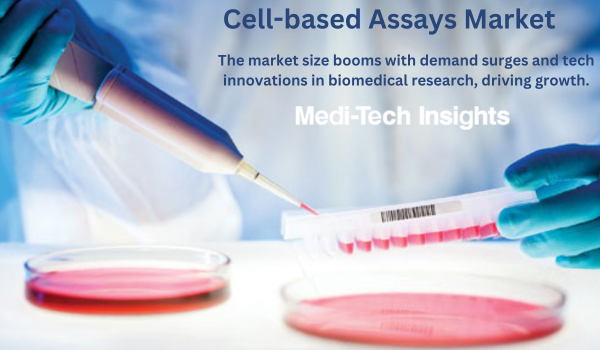
The cell-based assays market is poised for substantial growth, with an anticipated growth rate of 8-10% from 2024 to 2029. This growth trajectory is driven by a convergence of factors, including increasing demand fueled by expanding applications across diverse fields of biomedical research and healthcare. Technological innovations in assay methodologies, imaging techniques, and automation are revolutionizing the landscape, enabling higher-throughput screening, real-time monitoring, and multi-parametric analysis with enhanced precision and efficiency. To learn more about the research report, download a sample report.
The cell-based assays market is poised for remarkable expansion, with anticipated growth rates soaring between 2024 and 2029. The market is forecast to grow at a robust 8-10% growth trajectory, fueled by various factors driving innovation, accessibility, and efficacy in cell-based diagnostics and research.
Cell-based assays, instrumental in elucidating biological processes and drug responses in-vitro, are witnessing a surge in demand across various sectors within life sciences and healthcare. From drug discovery and development to disease research and toxicology, these assays have become indispensable tools for researchers and clinicians alike.
Key Market Drivers
Technological Advancements
Continuous innovations in assay methodologies, imaging techniques, and automation have revolutionized the field, enabling high-throughput screening, real-time monitoring, and multi-parametric analysis with unprecedented precision and efficiency.
Expanding Applications
The versatility of cell-based assays transcends traditional boundaries, finding applications in oncology, neuroscience, immunology, stem cell research, and regenerative medicine, among others. Their ability to mimic complex physiological environments and disease states positions them as indispensable assets in modern research and diagnostics.
Rising Demand for Personalized Medicine
With a paradigm shift towards personalized therapeutics, cell-based assays offer invaluable insights into patient-specific responses to drugs and treatments, facilitating tailored interventions and optimizing clinical outcomes.
Increasing Focus on Drug Safety and Toxicity Screening
Heightened regulatory scrutiny and the imperative for safer pharmaceuticals have propelled the demand for cell-based assays in toxicity testing and safety pharmacology, enabling early identification of adverse effects and minimizing risks in drug development pipelines.
To learn more about this report, download the PDF brochure
Key Constraints/Challenges
Complexity and variability
Cell-based assays can be complex and inherently variable due to differences in cell lines, culture conditions, and experimental protocols. Ensuring reproducibility and standardization across assays poses significant challenges, impacting data reliability and comparability.
Cost and resources
Cell-based assays often require specialized equipment, reagents, and skilled personnel, making them costly and resource-intensive. High upfront investment and ongoing operational expenses can limit adoption, particularly for smaller research laboratories or resource-limited settings.
Time-consuming Processes
Cell-based assays typically involve lengthy culture periods, multi-step protocols, and time-consuming data analysis, leading to prolonged turnaround times. This can hinder efficiency and scalability, especially in high-throughput screening applications or urgent clinical diagnostics.
Regional Segmentation of the Cell-based Assays Market
In North America, growing R&D investments, technological advancements, supportive healthcare infrastructure, supportive regulatory environment, collaborative research initiatives, increasing prevalence of chronic diseases and growing adoption of personalized medicine contribute to a robust market growth. Similarly, the European market growth is driven by growing pharmaceutical and biotechnology sectors (driving demand for cell-based assays in drug discovery, toxicity screening etc.), aging population and subsequent growth in chronic diseases, focus on personalized medicine, and emphasis on healthcare sustainability.
In Asia-Pacific region, the rapid urbanization, rising disposable incomes, and improving healthcare access are driving demand for advanced healthcare technologies, including cell-based assays. Rising prevalence of chronic diseases, growing biopharmaceutical industry, expanding healthcare infrastructure are further propelling the market growth.
Competitive Landscape
Some of the key players operating in the market include BD, Bio-Rad Laboratories, Inc., Corning Inc., Charles River Laboratories, Danaher Corp., F. Hoffmann-La Roche Ltd., Lonza, Merck KGaA, Promega Corp., and Thermo Fisher Scientific Inc., among others.
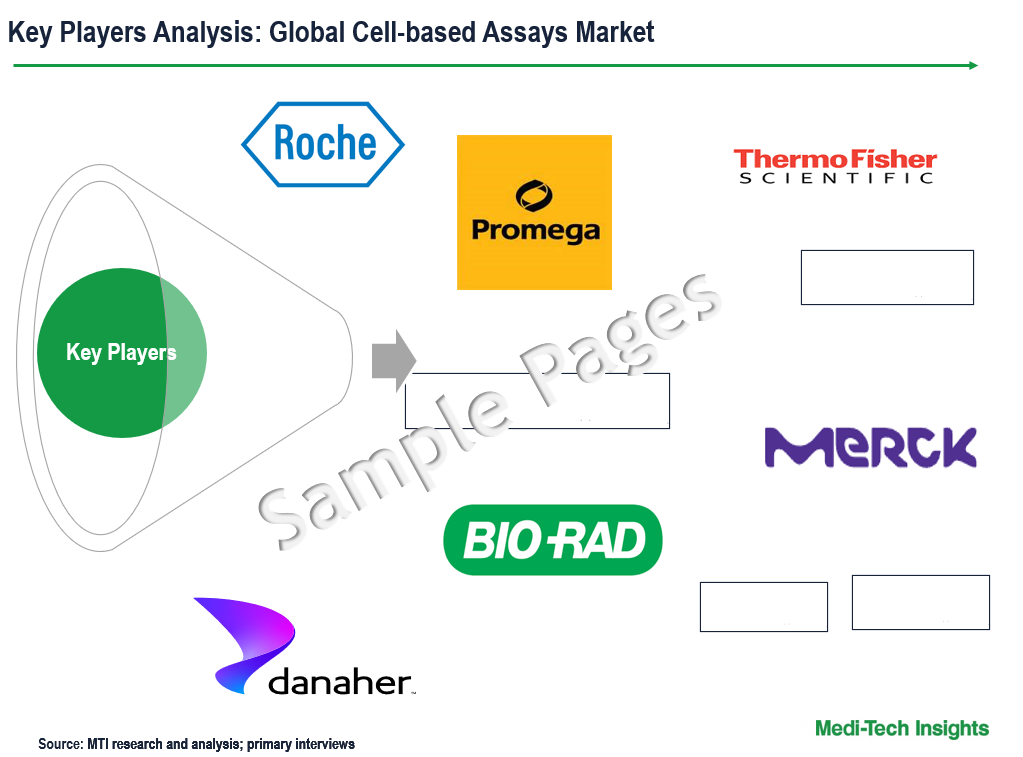
Get a Sample Report for Competitive Landscape Analysis
Organic and Inorganic Growth Strategies Adopted by Players to Establish Their Foothold in the Market
Players operating in this market are adopting both organic and inorganic growth strategies such as collaborations, and acquisitions to garner market share. For instance,
- In August 2022, a well-known biotechnology company, LifeNet Health LifeSciences, introduced a platform for cell-based assays. This new service, acquired through the acquisition of IONTOX, provides advanced options for screening substances in laboratory settings instead of using animals for testing. This approach offers more efficient and effective ways to assess the safety and efficacy of products.
- In March 2022, Promega Corporation and FUJIFILM Cellular Dynamics, Inc. formed a collaboration to advance in novel assay development for drug discovery. This collaboration involves the integration of custom differentiated induced pluripotent stem cells (iPSCs) with Promega's biosensor and intracellular bioluminescent reporter capabilities, enabling researchers to develop innovative assays for drug discovery
Key Strategic Questions Addressed
-
What is the market size & forecast for the Global Cell-based Assays Market?
-
What are the historical, present, and forecasted market shares and growth rates of various segments and sub-segments of the Global Cell-based Assays Market?
-
What are the major growth drivers, restraints/challenges impacting the market?
-
What are the opportunities prevailing in the market?
-
What is the investment landscape?
-
Which region has the highest share in the global market? Which region is expected to witness the highest growth rate in the next 5 years?
-
Who are the major players operating in the market? What is the competitive positioning of key players?
-
Who are the new players entering the market?
-
What are the key strategies adopted by players?
- Research Methodology
- Secondary Research
- Primary Research
- Market Estimation
- Market Forecasting
- Executive Summary
- Market Overview
- Market Dynamics
- Drivers and opportunities
- Restraints and challenges
- Market Dynamics
- Global Cell-based Assays Market - Size & Forecast (2022-2029), By Product Type
- Instruments/equipment
- Consumables
- Assay kits and reagents
- Cell lines
- Other consumables (microplates, probes and labels etc.)
- Global Cell-based Assays Market - Size & Forecast (2022-2029), By Application
- Drug discovery/development
- Biomedical research (basic research, cancer research, stem cell research, neuroscience)
- Clinical diagnostics
- Others
- Global Cell-based Assays Market - Size & Forecast (2022-2029), By End User
- Pharma/biotech companies
- Healthcare facilities
- Academic & research institutes
- Others
- Global Cell-based Assays Market - Size & Forecast (2022-2029), By Region
- North America (U.S. & Canada)
- Europe (UK, Germany, France, Italy, Spain, Rest of Europe)
- Asia Pacific (China, India, Japan, Rest of Asia Pacific)
- Rest of the World (Latin America, Middle East & Africa)
- Competitive Landscape
- Key Players and their Competitive Positioning
- Competitive Positioning of Key Players (2023)
- Key Strategies Assessment, By Player (2021-2023)
- New Product Launches
- Partnerships, Agreements, & Collaborations
- Mergers & Acquisitions
- Other Developments
- Key Players and their Competitive Positioning
- Key Companies Scanned (Indicative List)
- BD Biosciences
- Bio-Rad Laboratories, Inc.
- Thermo Fisher Scientific Inc.
- PerkinElmer
- Corning Inc.
- Charles River Laboratories
- Danaher Corporation
- Hoffmann-La Roche Ltd.
- Lonza
- Merck KGaA
- Promega Corporation
- Other Players
The study has been compiled based on extensive primary and secondary research.
Secondary Research (Indicative List)
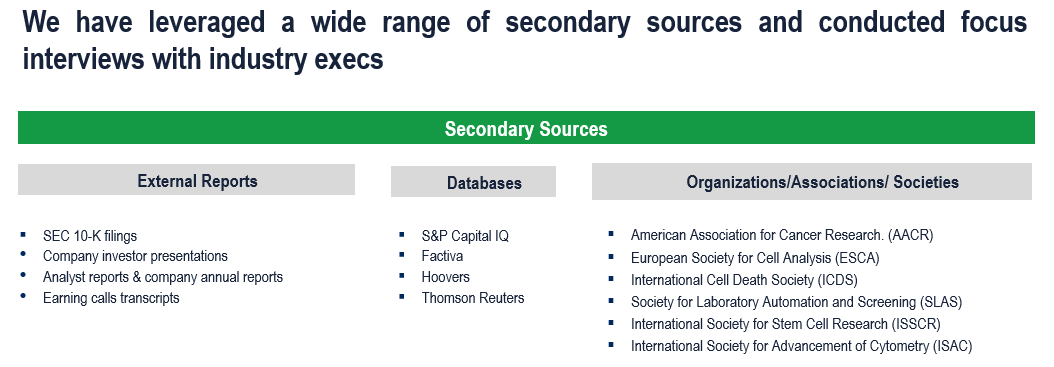
Primary Research
To validate research findings (market size & forecasts, market segmentation, market dynamics, competitive landscape, key industry trends, etc.), extensive primary interviews were conducted with both supply and demand-side stakeholders.
Supply Side Stakeholders:
- Senior Management Level: CEOs, Presidents, Vice-Presidents, Directors, Chief Technology Officers, Chief Commercial Officers
- Mid-Management Level: Product Managers, Sales Managers, Brand Managers, Business Development Managers, Consultants
Demand Side Stakeholders:
- Stakeholders in pharma/biotech companies, healthcare facilities and Academic & Research Institutes among others
Breakdown of Primary Interviews
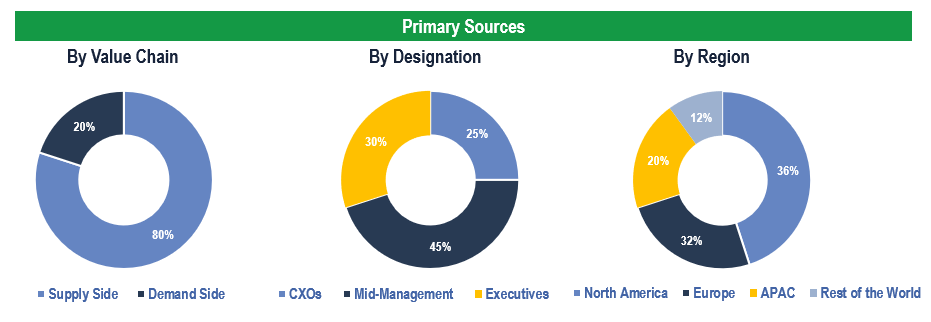
Market Size Estimation
Both ‘Top-Down and Bottom-Up Approaches’ were used to derive market size estimates and forecasts.
Data Triangulation
Research findings derived through secondary sources & internal analysis were validated with Primary Interviews, Internal Knowledge Repository, and Company Sales Data.

